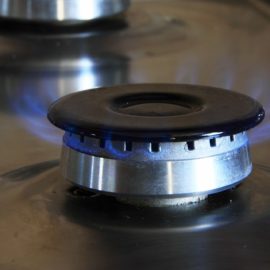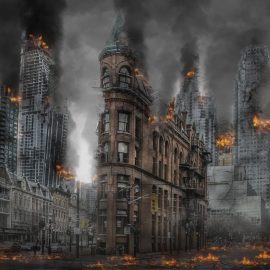
We talk and the earth heats up. This is an AP story in the paper today. They are talking in Glasgow as I write this but only moderate proposals seem to be coming out of the conference.
World leaders have been meeting for 29 years to try to curb global warming, and in that time Earth has become a much hotter and deadlier planet. Trillions of tons of ice have disappeared over that period, the burning of fossil fuels has spewed billions of tons of heat-trapping gases into the air, and hundreds of thousands of people have died from heat and other weather disasters stoked by climate change, statistics show. When more than 100 world leaders descended on Rio de Janeiro in 1992 for an Earth Summit to discuss global warming and other environmental issues, there was “a huge feeling of well-being, of being able to do something. There was hope really,” said Oren Lyons, faithkeeper of the Turtle Clan of the Onondaga Nation, one of the representatives for Native Americans at the summit. Now, the 91-year-old activist said, that hope has been smothered: “The ice is melting. … Everything is bad. … Thirty years of degradation.”
Abcnews.go.com
Why the degradation? Talk not action.
Data analyzed by The Associated Press from government figures and scientific reports shows “how much we did lose Earth,” said former U.S. Environmental Protection Agency chief William K. Reilly, who headed the American delegation three decades ago. That Earth Summit set up the process of international climate negotiations that culminated in the 2015 Paris accord and resumes Sunday in Glasgow, Scotland, where leaders will try to ramp up efforts to cut carbon pollution. Back in 1992, it was clear climate change was a problem “with major implications for lives and livelihoods in the future,” U.N. Secretary-General Antonio Guterres told the AP this month. “That future is here and we are out of time.” World leaders have hammered out two agreements to curb climate change. In Kyoto in 1997, a protocol set carbon pollution cuts for developed countries but not poorer nations. That did not go into effect until 2005 because of ratification requirements. In 2015, the Paris agreement made every nation set its own emission goals. In both cases, the United States, a top-polluting country, helped negotiate the deals but later pulled out of the process when a Republican president took office. The U.S. has since rejoined the Paris agreement.
While we dither the earth heats up. It shows how politics plays a greater part in climate change which should be a bipartisan effort.
The yearly global temperature has increased almost 1.1 degrees Fahrenheit (0.6 degrees Celsius) since 1992, based on multi-year averaging, according to the U.S. National Oceanic and Atmospheric Administration. Earth has warmed more in the last 29 years than in the previous 110. Since 1992, the world has broken the annual global high temperature record eight times. In Alaska, the average temperature has increased 2.5 degrees (1.4 degrees Celsius) since 1992, according to NOAA. The Arctic had been warming twice as fast as the globe as a whole, but now has jumped to three times faster in some seasons, according to the Arctic Monitoring and Assessment Program. That heat is melting Earth’s ice. Since 1992, Earth has lost 36 trillion tons of ice (33 trillion metric tons), according to calculations by climate scientist Andrew Shepherd of the University of Leeds. That includes sea ice in the Arctic and Antarctic that melts now more in the summer than it used to, the shrinking of giant ice sheets in Greenland and Antarctica, and melting glaciers.
Glaciers melting means water rises in the oceans and flooding occurs.
And Michael Zemp, who runs the World Glacier Monitoring Service, said Shepherd’s numbers may be a little low. He calculates that since 1992, the glaciers of the world have lost nearly 9.5 trillion tons of ice (8.6 trillion metric tons), about a trillion tons more than Shepherd’s figures. With more ice melt in the ocean and water expanding as it warms, the world’s average sea level has risen about 3.7 inches (95 millimeters) since 1992, according to the University of Colorado. That may not sound like much, but it is enough to cover the United States in water to a depth of 11 feet (3.5 meters), University of Colorado sea level researcher Steve Nerem calculated.
We also have had drier conditions feeding wildfires which are bigger and hotter.
Wildfires in the United States have more than doubled in how much they have burned. From 1983 to 1992, wildfires consumed an average of 2.7 million acres a year. From 2011 to 2020, the average was up to 7.5 million acres, according to the National Interagency Fire Center. “The unhealthy choices that are killing our planet are killing our people as well,” said Dr. Maria Neira, director of the World Heath Organization’s environment, climate change and health program. The United States has had 265 weather disasters that caused at least $1 billion in damage — adjusted to 2021 dollars — since 1992, including 18 so far this year. Those disasters have caused 11,991 deaths and cost $1.8 trillion. From 1980 to 1992, the U.S. averaged three of those billion-dollar weather disasters a year. Since 1993, the country has averaged nine a year. Worldwide there have been nearly 8,000 climate, water and weather disasters, killing 563,735, according to the EMDAT disaster databas e. Those figures are probably missing a lot of disasters and deaths, said the Debarati Guha-Sapir, who oversees the database for the Centre for Research on the Epidemiology of Disasters at the University of Louvain School of Public Health in Brussels.
All these disasters mean more deaths. Some, like heat, kill older people with no air conditioning. Floods drown people. Wildfires can catch people unawares.
Medical researchers earlier this year looked at 732 cities worldwide and calculated how many deaths were from climate change-caused extra heat. They found that on average since 1991, there have been 9,702 heat deaths from global warming a year just in those studied cities, which adds up to 281,000 climate-caused heat deaths since 1992. But that’s a small proportion of what really is happening, said study author Ana Vicedo-Cabrera, an epidemiologist at the Institute of Social and Preventative Medicine at the University of Bern in Switzerland. Using those cities, researchers calculated that during the four hottest months of the year, the added heat from climate change is responsible for 0.58% of the globe’s deaths. That comes to about 100,000 heat deaths caused by climate change a year for 29 years, she said. WHO officials said those figures make sense and calculate the annual death toll from climate change will rise to 250,000 a year in the 2030s.
Why is all of this happening – heat is being captured before it can leave the atmosphere.
Scientists say this is happening because of heat-trapping gases. Carbon dioxide levels have increased 17% from 353 parts per million in September 1992 to 413 in September 2021, according to NOAA. The agency’s annual greenhouse gas index, which charts six gases and weights them according to how much heat they trap, rose almost 20% since 1992. From 1993 to 2019, the world put more than 885 billion tons (803 billion metric tons) of carbon dioxide in the air from the burning of fossil fuels and making of cement, according to the Global Carbon Project, a group of scientists who track emissions. A pessimistic Lyons, the Native American activist, said, “I would say this meeting in Glasgow is the last shot.”
I hope the delegates to the conference take these words to heart and decide on needed actions and that the countries act as needed. Sadly half our population does not see the urgency. Just look at our congressional state delegation.



